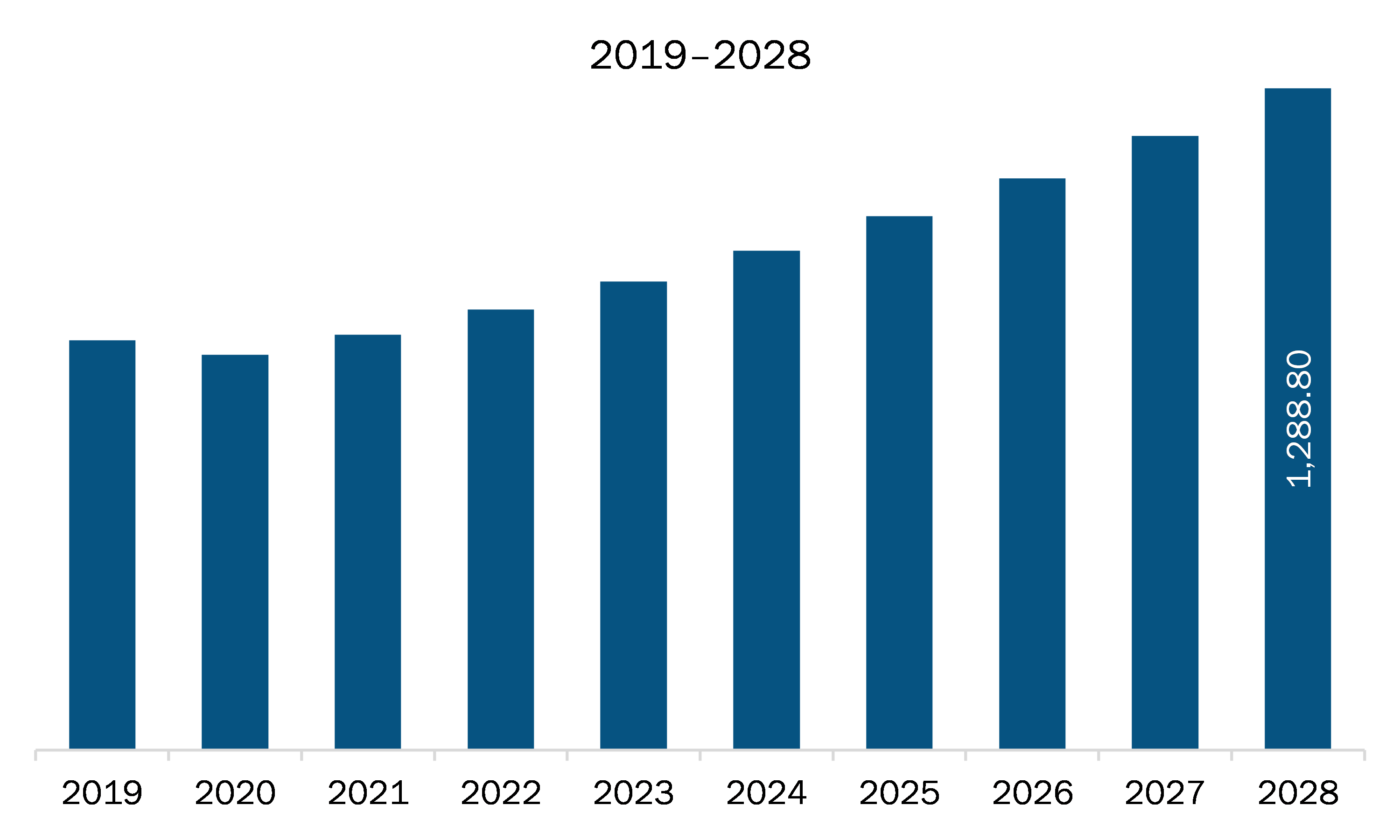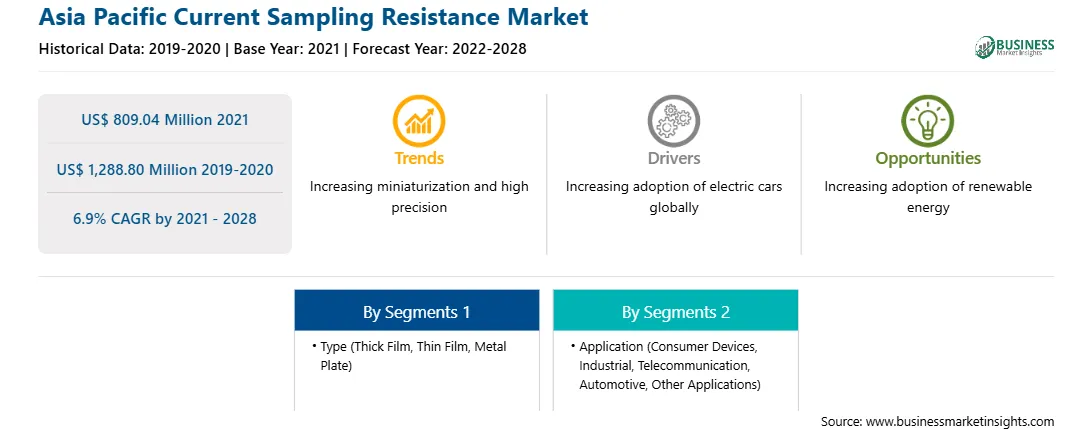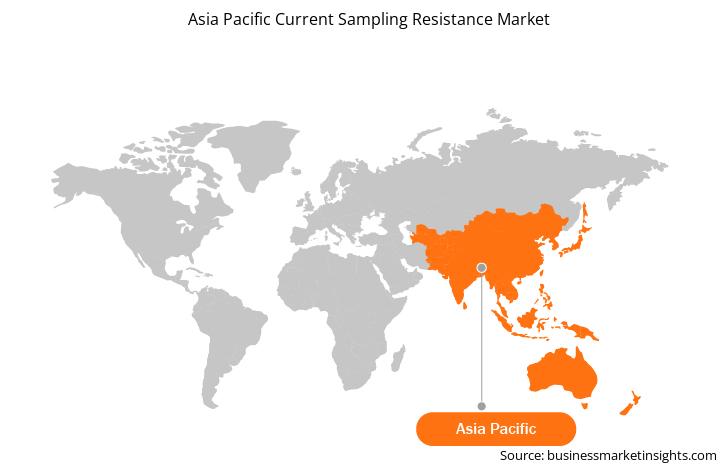The current sampling resistance market in APAC is sub-segmented into China, India, Japan, South Korea, and the Rest of APAC. China, Japan, South Korea, and Taiwan have become the "Big 4" semiconductor players in the Asia Pacific, owning four of the top six places in overall semiconductor revenue and each having multiple global semiconductor giants, owing to government support, a large market, and increased R&D expenditure. The Asia Pacific is also the world's largest semiconductor market, accounting for 60% of worldwide semiconductor sales, with China accounting for roughly 30% of that. Further, the Asia Pacific region is home to the world's largest household appliance manufacturers; the region is largely dominated by regional brands, such as Haier, Midea, Gree, Hisense from China, Samsung and LG from Korea, Panasonic, Sharp, Hitachi from Japan, and Videocon from India, all of which use current sensing resistors extensively in their products. Several companies utilize their original semiconductor components in their products. For example, Panasonic manufactures its current sensing resistors for use in its appliance electronics, resulting in the growth of the current sampling resistors market. As a result, the market for current sampling resistors is growing in the region.
In case of COVID-19, APAC is highly affected specially India. The COVID-19 pandemic has severely impacted APAC due to wide disease spread; countries in this region are among the highly populated, which leads to the greater risk infection spread. According to the Organization for Economic Co-operation and Development (OECD), the pandemic has affected major economies such as China, India, Australia, and Japan, which are experiencing inflation. India is the worst-hit country by the pandemic in this region. Many global brands and technological companies are headquartered in the region. The limitations imposed by governments to control the spread of COVID-19, the impact of the disease on populations of different countries in the region, and current inability to utilize production capabilities are the key factors impacting resistors market in Asian countries. Therefore, the COVID-19 pandemic is likely to continue to hinder the current sampling resistors market growth in APAC.

Strategic insights for the Asia Pacific Current Sampling Resistance provides data-driven analysis of the industry landscape, including current trends, key players, and regional nuances. These insights offer actionable recommendations, enabling readers to differentiate themselves from competitors by identifying untapped segments or developing unique value propositions. Leveraging data analytics, these insights help industry players anticipate the market shifts, whether investors, manufacturers, or other stakeholders. A future-oriented perspective is essential, helping stakeholders anticipate market shifts and position themselves for long-term success in this dynamic region. Ultimately, effective strategic insights empower readers to make informed decisions that drive profitability and achieve their business objectives within the market.

| Report Attribute | Details |
|---|---|
| Market size in 2021 | US$ 809.04 Million |
| Market Size by 2028 | US$ 1,288.80 Million |
| Global CAGR (2021 - 2028) | 6.9% |
| Historical Data | 2019-2020 |
| Forecast period | 2022-2028 |
| Segments Covered |
By Type
|
| Regions and Countries Covered | Asia-Pacific
|
| Market leaders and key company profiles |
The geographic scope of the Asia Pacific Current Sampling Resistance refers to the specific areas in which a business operates and competes. Understanding local distinctions, such as diverse consumer preferences (e.g., demand for specific plug types or battery backup durations), varying economic conditions, and regulatory environments, is crucial for tailoring strategies to specific markets. Businesses can expand their reach by identifying underserved areas or adapting their offerings to meet local demands. A clear market focus allows for more effective resource allocation, targeted marketing campaigns, and better positioning against local competitors, ultimately driving growth in those targeted areas.

The APAC current sampling resistance market is expected to grow from US$ 809.04 million in 2021 to US$ 1,288.80 million by 2028; it is estimated to grow at a CAGR of 6.9% from 2021 to 2028. Escalating production of consumer electronics is expected to drive the market growth. Consumer electronics and appliance makers aim to increase production rates in the coming years due to increasing demand from APAC region. The growth in work-from-home culture is anticipated to help the rise in demand for goods that improve personal convenience at home. Rural demand may surpass the demand from urban markets because of rising rural wages and government programs connected to rural electrification. As a result of the increased consumer electronics manufacturing, demand for electronics components such as resistors and capacitors are also projected to increase, as resistors are one of the most fundamental components in any electrical or electronic circuit. The electric resistors regulate the amount of current passing through the circuit. They control the voltage in the components to which they are connected. Without resistors, individual components cannot regulate the voltage, which can lead to overloading. These items address people's worries about home security and safety. Smart locks, doorbells, and cameras; smart smoke and carbon monoxide detectors; and smart switches, dimmers, and outlets are among the devices that are becoming increasingly popular in this sector. In addition, product diversification and the introduction of new technologies are also driving the demand for customized current sensing resistors. In addition to consumer electronics, wearables, smart speakers, home automation, connection technologies, and drones are contributing to the industry's growth across APAC region.
In terms of type, the thick film segment accounted for the largest share of the APAC current sampling resistance market in 2020. In terms of application, the industrial segment held a larger market share of the APAC current sampling resistance market in 2020.
A few major primary and secondary sources referred to for preparing this report on the APAC current sampling resistance market are company websites, annual reports, financial reports, national government documents, and statistical database, among others. Major companies listed in the report are Cyntec Co., Ltd.; KOA Speer Electronics, Inc.; Panasonic Corporation; ROHM CO., LTD.; Samsung Electro-Mechanics Co, Ltd.; Susumu Co., Ltd; TT Electronics; Viking Tech Corporation; Vishay Intertechnology, Inc.; and Walter Electronic Co.Ltd.
The Asia Pacific Current Sampling Resistance Market is valued at US$ 809.04 Million in 2021, it is projected to reach US$ 1,288.80 Million by 2028.
As per our report Asia Pacific Current Sampling Resistance Market, the market size is valued at US$ 809.04 Million in 2021, projecting it to reach US$ 1,288.80 Million by 2028. This translates to a CAGR of approximately 6.9% during the forecast period.
The Asia Pacific Current Sampling Resistance Market report typically cover these key segments-
The historic period, base year, and forecast period can vary slightly depending on the specific market research report. However, for the Asia Pacific Current Sampling Resistance Market report:
The Asia Pacific Current Sampling Resistance Market is populated by several key players, each contributing to its growth and innovation. Some of the major players include:
The Asia Pacific Current Sampling Resistance Market report is valuable for diverse stakeholders, including:
Essentially, anyone involved in or considering involvement in the Asia Pacific Current Sampling Resistance Market value chain can benefit from the information contained in a comprehensive market report.